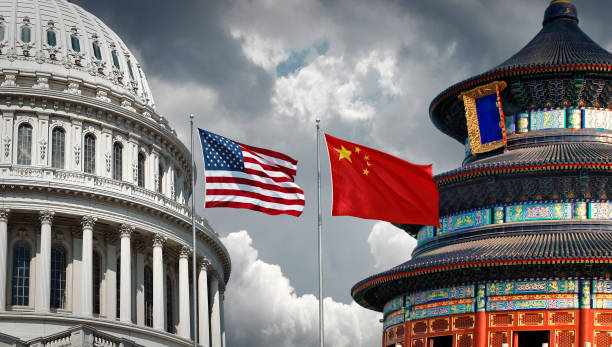
In a significant development marking the evolving dynamics of international trade, the United States saw its goods-trade deficit with China diminish to its smallest total in over a decade last year. According to the latest data from the US Commerce Department, the trade imbalance — the surplus of imports over exports to China — was recorded at $279 billion, reflecting a notable decline in imports from the Asian giant. This reduction is seen as a positive development in Washington, given the ongoing efforts to recalibrate the geopolitical and economic engagements between the two powerhouses.
Shift in Trade Dynamics
The goods deficit with China as a proportion of the US Gross Domestic Product (GDP) shrank to merely 1%, marking the lowest ratio since 2002. This shift underscores a broader strategy by the US to diversify its import sources away from China, motivated by higher tariffs initiated under former President Donald Trump’s administration and continued efforts under President Joe Biden to minimize China’s role in American supply chains in favor of increased trade with strategic allies.
Maeva Cousin, a senior global economist at Bloomberg Economics, highlighted the changing geographical pattern of US imports, attributing the trend not only to tariffs introduced since 2018 but also to signs of a more extensive trade diversification process encompassing various categories.
Contrast with Other Trade Partners
While the trade deficit with China has contracted, the US’s goods deficits with countries like Germany, Italy, the Netherlands, Mexico, South Korea, Taiwan, and India have surged to new heights. These emerging shifts in global trade flows are a consequence of geopolitical tensions, tariff wars, and supply-chain challenges, prompting a global reshuffling of manufacturing production.
The burgeoning deficits with European nations and other global partners could provoke policy responses, especially if Donald Trump were to win re-election. Speculations abound regarding potential trade measures against the European Union to address longstanding disputes, including a broad minimum tariff of 10% that could also target China.
Factors Behind the Decline in Imports from China
The 2023 dip in imports from China cannot be solely attributed to tariffs and geopolitical maneuvering. Other contributing factors include fluctuating currency values, well-stocked US inventories, and diminished consumer demand. The shift in production locales, prompted by increasing labor costs in China, predates the trade war, indicating a longer-term trend towards diversifying manufacturing bases.
Moreover, the imposition of tariffs under Trump’s administration may have led to under-reporting of imports from China by US importers, as suggested by a 2021 analysis conducted by Federal Reserve economists.
Table: Overview of US Trade Deficit Trends
| Country/Region | 2023 Trade Deficit ($ billion) | Change in Deficit | Factors Influencing Shift |
|---|---|---|---|
| China | 279 | Decrease | Tariffs, supply chain diversification, consumer demand |
| Germany | New Highs | Increase | Shift in manufacturing, geopolitical tensions |
| Italy | New Highs | Increase | – |
| Netherlands | New Highs | Increase | – |
| Mexico | Record | Increase | – |
| South Korea | Record | Increase | – |
| Taiwan | Record | Increase | – |
| India | Record | Increase | – |
As the global trade landscape continues to evolve, the US’s strategic pivot towards reducing its dependence on China for imports and broadening its trade alliances heralds a new chapter in international economics. The implications of these shifts, coupled with potential policy adjustments in response to changing deficits with other nations, will significantly influence the future of global trade relations and economic diplomacy.
Featured image credit: narvikk via Getty Images
